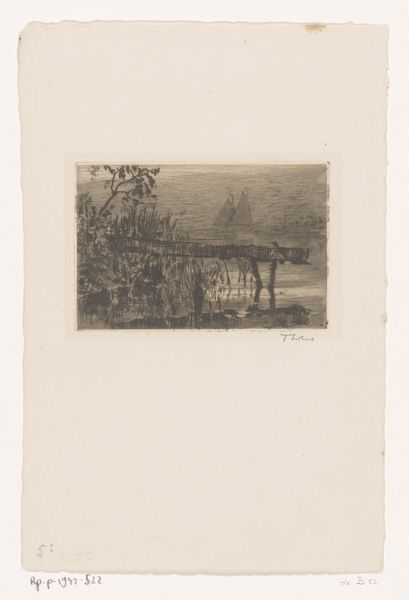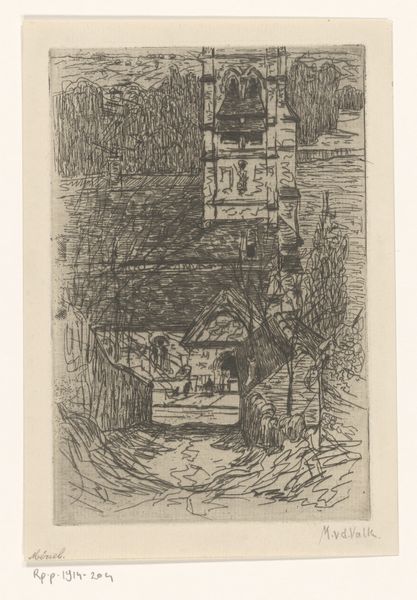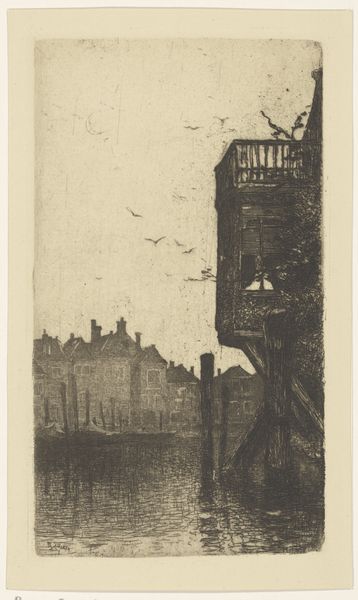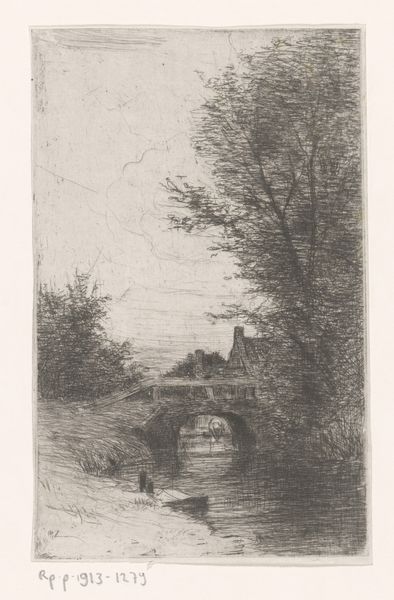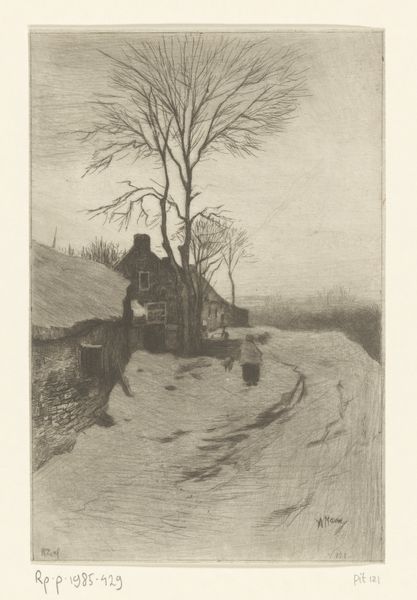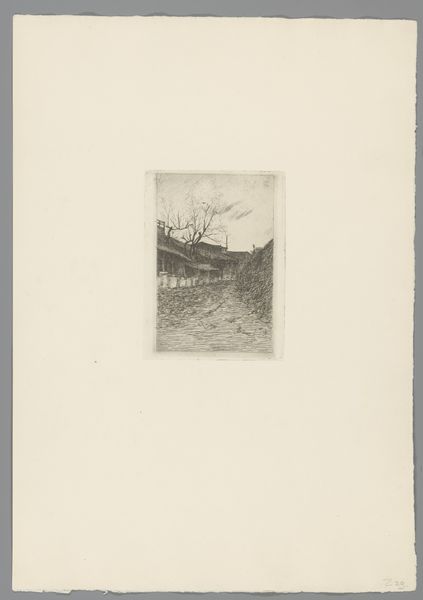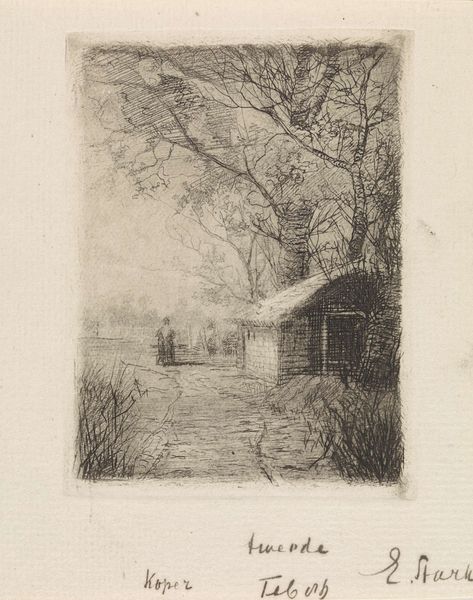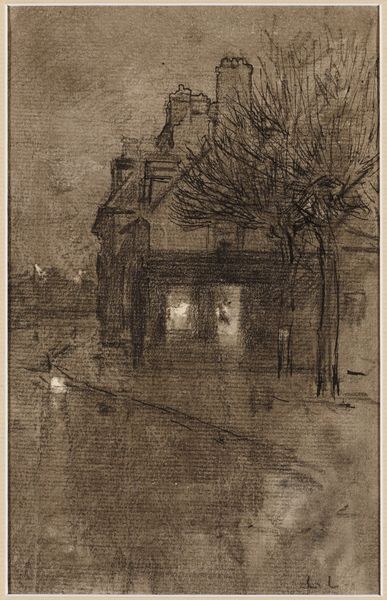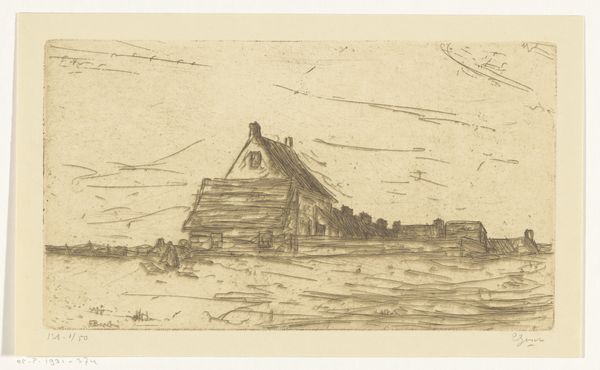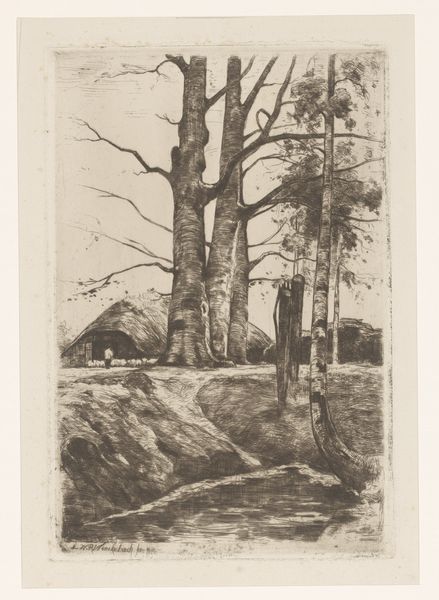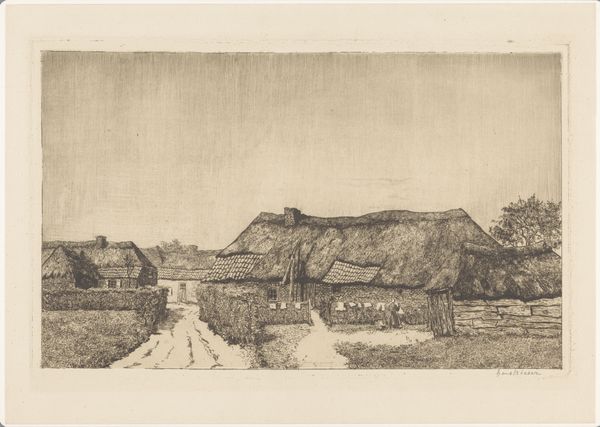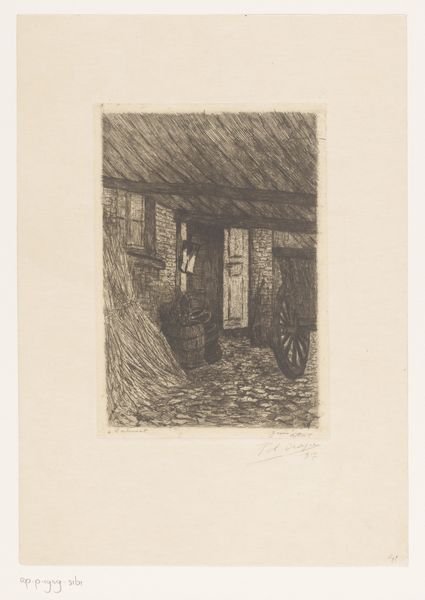
drawing, print, paper, ink
#
pencil drawn
#
drawing
#
narrative-art
# print
#
pencil sketch
#
landscape
#
paper
#
ink
#
pencil drawing
#
folk-art
#
cityscape
#
pencil work
Dimensions: 125 mm (height) x 105 mm (width) (bladmaal)
Curator: Here we have Andrè Bork's "Illustration til 'Den syvende far i huset,'" dating from 1854 to 1932. It’s a print made with ink and pencil on paper. Editor: My first thought? Melancholy. It feels like twilight in a forgotten village, the kind where stories are whispered more than spoken. All the hard edges, rendered in ink and pencil, add to the solemnity. Curator: That's a keen observation. Considering Bork’s background, rooted in folk art and narrative illustration, the scene taps into a certain timeless quality. We're looking at what appears to be a depiction of village life, perhaps plucked straight from the pages of a folk tale. The technique, relying heavily on hatching and cross-hatching, adds depth but also a roughness... an almost artisanal quality. Editor: Absolutely. You can practically feel the texture of the wood in those buildings, and that little figure walking away seems like everyone's hard-worn great-grandfather. Think about how laborious creating this image by hand would be. No industrial printing press here; each line carefully etched or drawn. It brings to mind the slow, deliberate rhythms of rural life. Did that inform the kind of subjects that folk artists would want to record and then consume through printed images? Curator: Most likely so. The cityscape itself speaks to the intersection of human creation and the natural world. It’s interesting, though, how the perspective almost seems to compress the space. We see the houses, the church spire in the distance, but it all feels flattened. Is this intentional? It makes it more intimate, less grand and certainly relatable. Editor: Definitely relatable. It’s not a triumphant vista; it's everyday life rendered with, dare I say it, working-class materials and techniques. And don’t forget, printed images like this circulated within very specific communities. There's also an incredible charm in the handmade quality that no digital reproduction can quite capture. That asymmetry of the composition, it seems quite striking for its time, too. The choice not to give us a center, that evokes for me the idea of choices being made at every corner, decisions always waiting. Curator: So, from rural simplicity to a reflection on a turning point. Editor: Indeed. Looking at this illustration gives us a lens for seeing a world rooted in handcrafted stories and invites reflection about what informs visual practices across communities of art consumers and creators.
Comments
No comments
Be the first to comment and join the conversation on the ultimate creative platform.
